English Name:
1- Aloe bitter
2- Barbados Aloe
3- Luanda tree Aloe
Other Names In English (UK, USA, Canada, South Africa, Australia, New Zealand):
1- Aloe resin
2- Windhoek Aloe, Aloe of the Shore, Mopane Aloe, Sea-side Aloe.
Family: Asphodelaceae
🟤 Industries That Use Aloe Resin (Aloe succotrina Lam.)
Aloe succotrina, also known as succotrine aloe, is a succulent native to the Cape region of South Africa and Middle East. It produces a dark, bitter resin or gum obtained from the dehydrated latex (exudate) beneath the leaf skin. This Aloe resin has been used in traditional, pharmaceutical, and cosmetic applications—especially as a purgative and topical remedy.
1. Pharmaceutical & Herbal Medicine Industry
Aloe succotrina resin is historically classified as a powerful cathartic (strong laxative) and has been used in European, Islamic, and African pharmacopeias.
Applications:
-
Used in herbal purgative pills or powders
-
Treats constipation, sluggish digestion, and intestinal parasites
-
Sometimes included in detox and deworming regimens
✅ Typically used in very small doses due to its potent anthraquinone content (aloin, aloe-emodin)
2. Traditional & Ethnobotanical Medicine
Traditional practitioners in South Africa, Iran, India, and the Mediterranean use aloe resins for both internal cleansing and external applications.
Applications:
-
Applied to wounds, ulcers, or inflamed skin
-
In Iranian traditional medicine, used topically for skin eruptions, itching, and fungal infections
-
Sometimes mixed with other herbs or fats to create pastes or ointments
✅ Used in small amounts due to bitterness and strength
3. Cosmetic & Personal Care Industry
While Aloe vera gel is more commonly used in cosmetics, the resin of Aloe succotrina is used for anti-inflammatory and exfoliating products—especially in artisan skincare.
Applications:
-
Included in cleansing balms or acne treatment masks
-
Used in herbal hair rinses for dandruff or itchy scalp
-
Traditionally used in ointment bases to treat minor skin disorders
✅ Resin has astringent and antimicrobial properties
4. Animal & Veterinary Use (Traditional)
In rural settings, Aloe resin is used as a natural dewormer or digestive tonic for livestock.
Applications:
-
Mixed with feed to treat intestinal parasites in goats or camels
-
Applied to hoof or skin infections as a poultice
✅ Rare today, but part of traditional pastoral knowledge systems
5. Dyeing & Artisanal Use
The deep brown resin of Aloe succotrina has minor use as a natural dye or ink base in artisan craft.
Applications:
-
Pigment in calligraphy inks and natural brush paints
-
Occasionally used in leatherwork and textile dyeing (with mordants)
✅ Natural pigment use is rare and limited to traditional art communities
✅ Summary of Key Applications
| Industry | Common Uses |
|---|---|
| Pharmaceutical & Herbal | Purgative pills, detox formulas, anti-parasitic preparations |
| Traditional Medicine | Wound ointments, fungal and skin treatments, cleansing remedies |
| Cosmetic & Personal Care | Acne masks, anti-itch salves, artisan skincare |
| Veterinary Use (Traditional) | Dewormer for livestock, hoof treatments |
| Artisanal Use | Natural dye, calligraphy ink, traditional pigment source |
🔬 Key Features of Aloe Resin (Aloe succotrina)
-
Form: Brown to blackish dry resin (from leaf latex)
-
Taste/Odor: Very bitter, pungent aroma
-
Active Compounds: Aloin, aloe-emodin, resinous anthraquinones
-
Solubility: Partially water-soluble; dissolves better in alcohol or oil
-
Harvesting Method: Latex collected by slicing leaf skin; dried and powdered
-
Potency: Much stronger than Aloe vera gel; used in micro-doses
🟤 Industries That Use Aloe Resin from Aloe vera (L.) Burm.f.
While Aloe vera is best known for its clear, soothing leaf gel, the resin or latex—a yellow exudate from just beneath the leaf rind—is a medicinally potent and bitter substance. This dried latex, often referred to as Aloe vera resin, is rich in anthraquinones (especially aloin) and has long been used for its purgative, antimicrobial, and topical properties in traditional and pharmaceutical applications.
1. Pharmaceutical & Herbal Medicine Industry
The resin is a well-known cathartic used in small quantities as a powerful laxative in herbal and over-the-counter formulations.
Applications:
-
Included in detox and colon cleanse tablets or tinctures
-
Used in anti-parasitic and constipation remedies
-
May appear in compound laxative powders (combined with senna, cascara, rhubarb)
✅ Aloin is the main active ingredient—used under controlled dosing due to its strong effect.
2. Traditional & Ethnomedicinal Systems
In Ayurvedic, Unani, and traditional Iranian medicine, Aloe vera resin is used for internal purification and skin conditions.
Applications:
-
Applied topically for eczema, fungal infections, or insect bites
-
Used in small oral doses for detoxification or menstrual regulation
-
Mixed with ghee, oils, or plant powders in compound prescriptions
✅ Regarded as both cleansing and heat-inducing, thus used cautiously
3. Cosmetic & Skincare Industry (Artisan Use)
Though commercial cosmetics focus on Aloe gel, resin is used in artisan formulations for its exfoliating, antimicrobial, and astringent properties.
Applications:
-
Incorporated into natural peels or blemish-control masks
-
Used in herbal salves for acne or athlete’s foot
-
Mixed with oils to create anti-inflammatory ointments
✅ Not used in mainstream skincare due to regulatory restrictions on aloin in cosmetics (especially in the EU and US)
4. Veterinary & Livestock Care (Traditional)
Used in rural veterinary care as a digestive aid and topical antifungal for livestock.
Applications:
-
Given in diluted form to treat constipation or indigestion in goats
-
Applied to skin infections or sores in animals like camels and sheep
✅ Still practiced in parts of India, Iran, and Africa
5. Agricultural & Pesticidal Uses
Aloe vera latex is known to have antifungal and insecticidal properties, useful in organic farming.
Applications:
-
Used in botanical sprays for leaf fungus or garden pests
-
Mixed with neem or chili extract in traditional plant defense formulas
✅ Experimental in nature, not yet commercialized on a large scale
✅ Summary of Key Applications
| Industry | Common Uses |
|---|---|
| Pharmaceutical & Herbal | Laxatives, deworming aids, detox tablets |
| Traditional Medicine | Skin salves, menstrual tonics, oral cleansing agents |
| Skincare (Artisan) | Acne masks, exfoliating pastes, natural ointments |
| Veterinary Medicine | Digestive tonic, topical antifungal treatments |
| Organic Agriculture | Anti-fungal plant sprays, insect repellents |
🌿 Key Features of Aloe vera Resin
-
Form: Yellow-brown dried latex, powder or hardened resin
-
Main Compound: Aloin A & B, anthraquinone derivatives
-
Taste/Odor: Bitter, earthy smell
-
Harvest Method: Collected from cut leaf edges, dehydrated to solidify
-
Potency: High; requires careful dosing
-
Solubility: Soluble in alcohol, partly in water and oils
💧 Industries That Use Aloe Gel (Aloe vera (L.) Burm.f.)
Aloe vera gel is the clear, mucilaginous substance found in the inner leaf of the Aloe plant. Rich in polysaccharides, vitamins, enzymes, and amino acids, it is renowned for its cooling, hydrating, and healing properties. Unlike the bitter yellow latex (resin), the gel is non-toxic and widely used across the cosmetic, food, pharmaceutical, and wellness sectors.
1. Cosmetic & Skincare Industry
The largest consumer of Aloe gel globally, this industry uses Aloe in a wide range of skin, hair, and body care products.
Applications:
-
Moisturizing gels and creams for dry, sensitive, or sunburned skin
-
After-sun lotions, burn ointments, and post-shave gels
-
Acne care: Soothing and antimicrobial formulations
-
Hair products: Shampoos, leave-in conditioners, scalp treatments
✅ Highly valued for hydration, soothing, anti-inflammatory, and antimicrobial effects
2. Pharmaceutical & Therapeutic Products
Aloe gel is included in topical pharmaceuticals and natural healing aids.
Applications:
-
Burn creams and wound healing gels
-
Psoriasis and eczema relief creams
-
Used as a base in transdermal drug delivery systems
-
Included in oral lozenges for mouth ulcers and sore throats
✅ Contains acemannan, a polysaccharide with immune-modulatory effects
3. Food & Beverage Industry
Aloe vera gel (inner fillet) is used in functional beverages, dietary supplements, and digestive tonics.
Applications:
-
Aloe juice or gel drinks (often flavored or mixed with fruit juices)
-
Prebiotic fiber beverages supporting gut health
-
Gel capsules as part of natural detox programs
✅ Must be free of latex (aloin < 10 ppm) to be safe for ingestion
4. Herbal & Nutraceutical Industry
Aloe gel is promoted in gut health, immune support, and hydration supplements.
Applications:
-
Digestive soothing agents for GERD or acid reflux
-
Immune support formulations with acemannan
-
Capsules or powders in natural skin-nourishment supplements
✅ May be mixed with other herbs like Turmeric, Moringa, Ginger, or Amla
5. Veterinary & Pet Care
Used in natural animal care products, especially for skin and digestive support.
Applications:
-
Applied to cuts, burns, or rashes on pets
-
Ingested (in purified form) for digestive or immune support
-
Included in natural grooming products
✅ Safe when latex-free; must be properly processed
6. Textile & Wellness Products
Aloe gel is infused into fabric, sanitary products, and wellness accessories.
Applications:
-
Aloe-treated clothing, socks, or face masks
-
Soothing components in sanitary pads and wipes
-
Cooling pillow covers or aloe-infused bathrobes
✅ Used as a natural textile additive in comfort-based consumer goods
✅ Summary of Key Applications
| Industry | Common Uses |
|---|---|
| Skincare & Cosmetics | Moisturizers, after-sun gels, acne and burn treatments |
| Pharmaceutical | Burn creams, wound gels, mouth ulcer relief |
| Food & Beverage | Aloe drinks, digestive tonics, hydration blends |
| Herbal & Nutraceutical | Prebiotic support, detox supplements, gut health capsules |
| Veterinary Care | Skin aid for pets, natural grooming, digestive tonics |
| Wellness/Textiles | Aloe-infused fabrics, sanitary products, wellness accessories |
🌿 Key Features of Aloe Gel:
-
Color: Clear to slightly cloudy
-
Texture: Viscous, jelly-like
-
Key Compounds: Acemannan, glucomannans, amino acids, vitamins A/C/E, enzymes
-
Harvesting Method: Filleted from inner leaf (latex-free)
-
Safety Note: Only inner fillet should be used for ingestion; latex must be removed
-
Storage: Needs preservation or refrigeration to prevent microbial growth
🟢 Comparison Table:
Aloe succotrina Resin vs Aloe vera Resin vs Aloe vera Gel
| Feature | Aloe succotrina Resin | Aloe vera Resin | Aloe vera Gel |
|---|---|---|---|
| Botanical Source | Aloe succotrina (Cape Aloe) | Aloe vera (L.) Burm.f. – latex portion | Aloe vera (L.) Burm.f. – inner leaf gel |
| Plant Part Used | Leaf latex (outer part beneath rind) | Leaf latex (outer part beneath rind) | Inner fillet (clear mucilage) |
| Appearance | Dark brown to black, solid or powdered resin | Yellow to brownish, powdered or sticky resin | Transparent to pale green, viscous gel |
| Main Active Compounds | Aloin, aloe-emodin, anthraquinones | Aloin A & B, resinous anthraquinones | Acemannan, polysaccharides, amino acids, vitamins |
| Taste/Odor | Very bitter, strong herbal odor | Bitter, earthy | Mild, slightly herbal scent |
| Primary Use | Strong laxative, antifungal, traditional medicine | Strong laxative, minor skin remedies | Hydration, skin healing, burns, digestion |
| Industries | Herbal medicine, artisan cosmetics, ethnomedicine | Herbal/pharma (laxatives), veterinary | Cosmetics, pharma, food, textile, wellness |
| Topical Use | Limited, for fungal/itchy skin in traditional use | Minor; mostly internal | Excellent: burns, acne, irritation, sun care |
| Internal Use | Potent laxative (used cautiously) | Potent laxative (strict dosage) | Safe (if latex-free); used in drinks, capsules |
| Potency & Risk | Strong – high anthraquinone content | Strong – regulatory restrictions on aloin | Gentle – well tolerated and widely approved |
| Toxicity (Raw) | High – not for unregulated internal use | High – must be used in tiny doses | Non-toxic when latex is fully removed |
| Food Grade Use | ❌ Not used in food | ❌ Not used in food | ✅ Used in beverages, supplements, and health foods |
| Preservation Requirements | Dry powder, shelf-stable | Dry powder, shelf-stable | Requires refrigeration or preservatives |
| Regulatory Notes | Not commonly regulated; used in folk medicine | Aloin content regulated (<10 ppm in foods) | FDA/EU approved for topical & food use (gel only) |
✅ Summary:
-
🔴 Aloe succotrina Resin:
→ Very potent traditional laxative, not used in modern food or cosmetics
→ Still relevant in ethnobotanical medicine and artisan herbal products -
🟠 Aloe vera Resin (Latex):
→ Known for strong cathartic action; must be used cautiously due to aloin
→ Subject to regulatory control in supplements and cosmetics -
🟢 Aloe vera Gel:
→ Widely accepted, non-toxic, and highly versatile
→ Used in skin care, beverages, nutraceuticals, and pharmaceuticals
GENERAL DATA
Plant parts: Slimy tissue inside the leaf
Cultivation mode: Wild collection / Cultivated
In manufacturing: Food, Pharmaceutical, Cosmetics, and Beverages.
HARVEST CALENDAR
Feb
Mar
Apr
May
Jun
Jul
Aug
Sep
Oct
Nov
Dec
To order Aloe Vera Resin, please contact us.
About Aloe Vera
Aloe vera is the leaves of a bush whose height reaches sixty centimeters. Aloe vera plant does not have a trunk and its leaves grow directly from the root. These leaves are thick and their cross-section is crescent-shaped, and there are small saw blades on their side. The lower parts of the leaves are wider than the upper parts and the tips of the leaves become sharp. There is a sticky, transparent and bitter jelly inside the leaves of the Aloe Vera plant. The dried jelly of the leaves of this plant is usually prepared in the form of red, shiny and sticky pieces that break easily. Its powder is yellow and very bitter.
The best Aloe resin is smooth, pure, fragrant, and its color is same as brewed saffron.
From the middle of the Aloe plant, a relatively long and smooth stem grows, whose cross-section is circular. At the end of this stem, small, yellow or orange, almost cylindrical and cone-shaped flowers grow in spikes.
Aloe Resin Temperament
Hot and dry.
To order Aloe Vera Resin, please contact us.
If you pour some Aloe gel in a clay container and pour 25 grams of Ajwain (Trachyspermum ammi) seeds on it, pour Aloe gel on it again, then put the container on the fire for 8 hours and after the container and the contents inside cool down, take out the Ajwain seeds and clean and dry it.
Eating 1.15 gram of these Ajwain seeds is a laxative for thick and rotten humors and cures shortness of breath.
Aloe gel and White Alum poultice is useful for healing eye injury and redness.
Aloe resin heals stomachache, splenitis, most phlegmatic diseases, jaundice, melancholia, hemorrhoids, chronic wounds, especially anal and male genital wounds, and most brain diseases caused by corrupted humors in the stomach.
Aloe resin is a laxative for black bile, thick or watery phlegm, and yellow bile. But before that rotten humors should be ready to expel through appropriate medicine.
Eating 2.4 grams of Aloe resin with cold water helps to treat bloody phlegm and jaundice.
Eating Aloe resin with water and honey is a laxative for phlegm and yellow bile. Eating Aloe resin with Mastic removes waste materials from the brain.
Eating Aloe resin with Damask Rose and Mastic is useful for stomach ailments. Eating Aloe resin with Agarikon expels the chest waste materials and improves joint pain
Aloe resin drops with Plantain seed glaze or Pumpkin oil heals nose and ear wounds.
Aloe Resin Modifiers
Gum Tragacanth for intestinal weakness.
Damask Rose leaves and Mastic for stomach and liver weakness.
To ward off the harm of Aloe resin for the anus, Commiphora mukul should be used.
It is better that young people, choleric temperaments, hot temperaments, those who suffer from visceral weakness, especially intestinal weakness, and liver weakness, those who suffer from anal diseases, hemorrhoids, blood predominance, and narrowing of arteries, should not consume Aloe resin.
Aloe should not be consumed when food is in the stomach and also inn very hot or very cold climates.
To order Aloe Resin, please contact us.

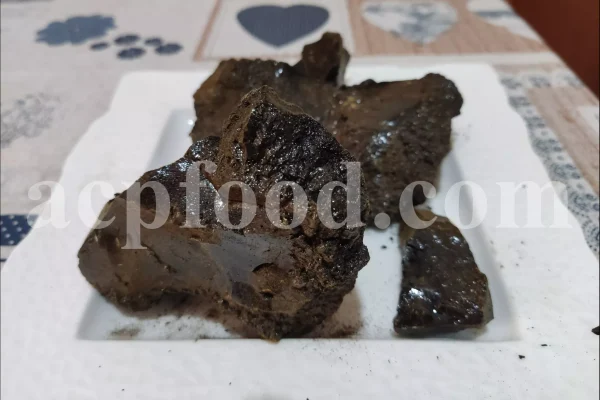
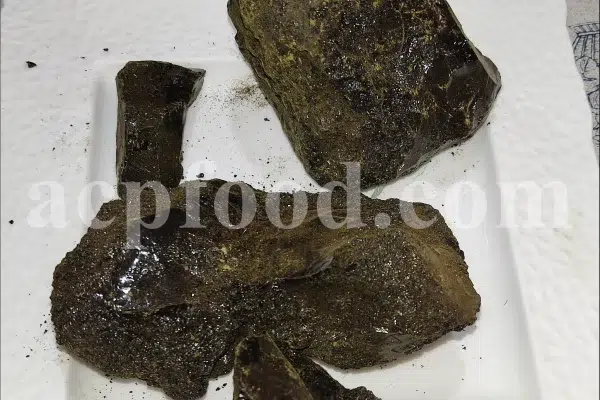
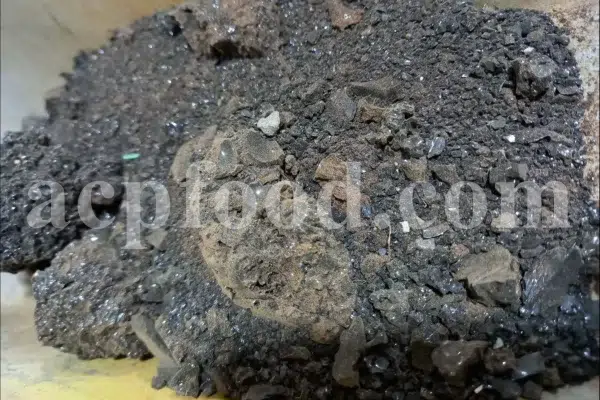
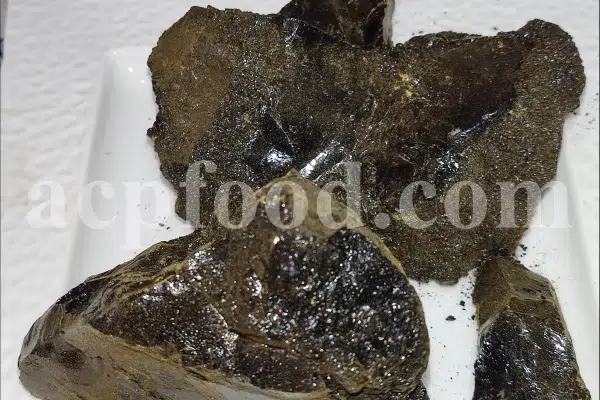
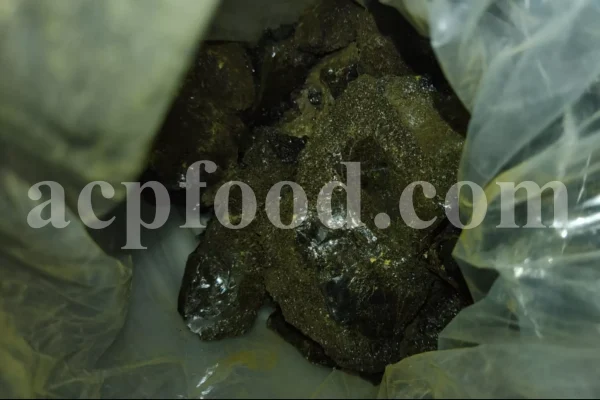
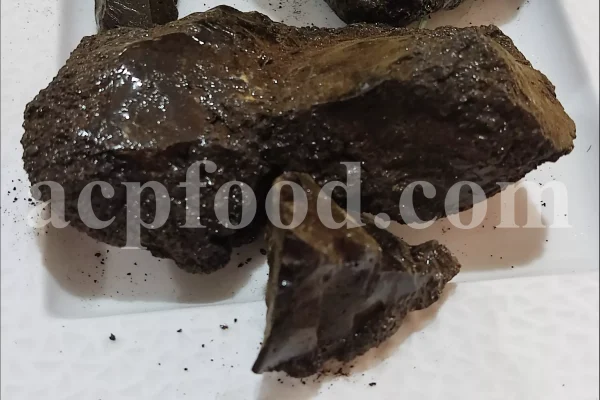

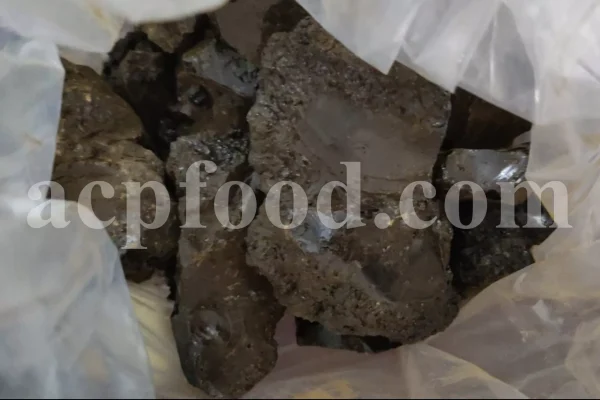
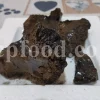
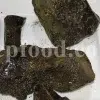
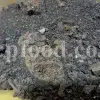

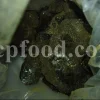
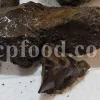
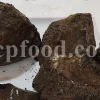

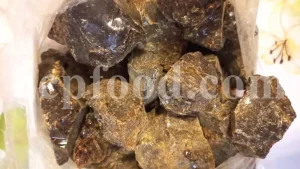
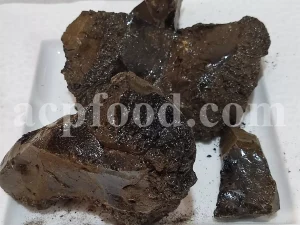

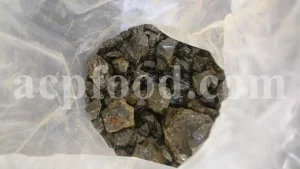
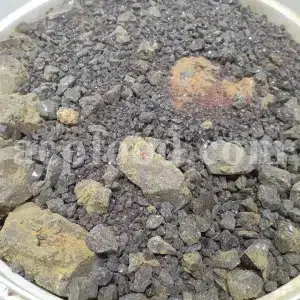
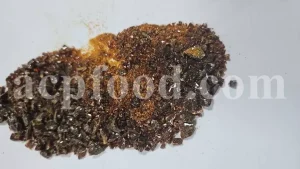
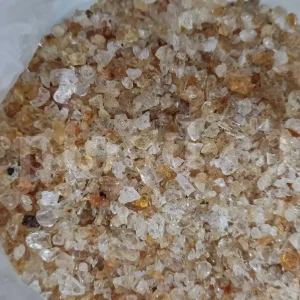
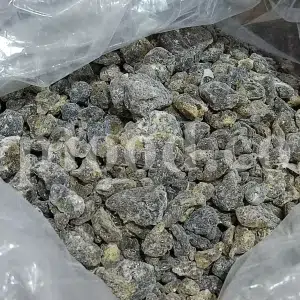
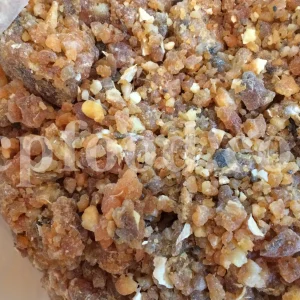
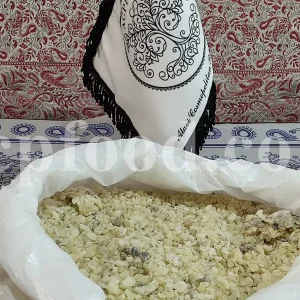
Reviews
There are no reviews yet.